Maitake mushrooms are delicious when grilled or roasted, but in Japan, they are often enjoyed fried. In Karikari Maitake, maitake mushrooms are pan-fried instead of being deep-fried, which enhances their natural flavor while creating a crispy texture.
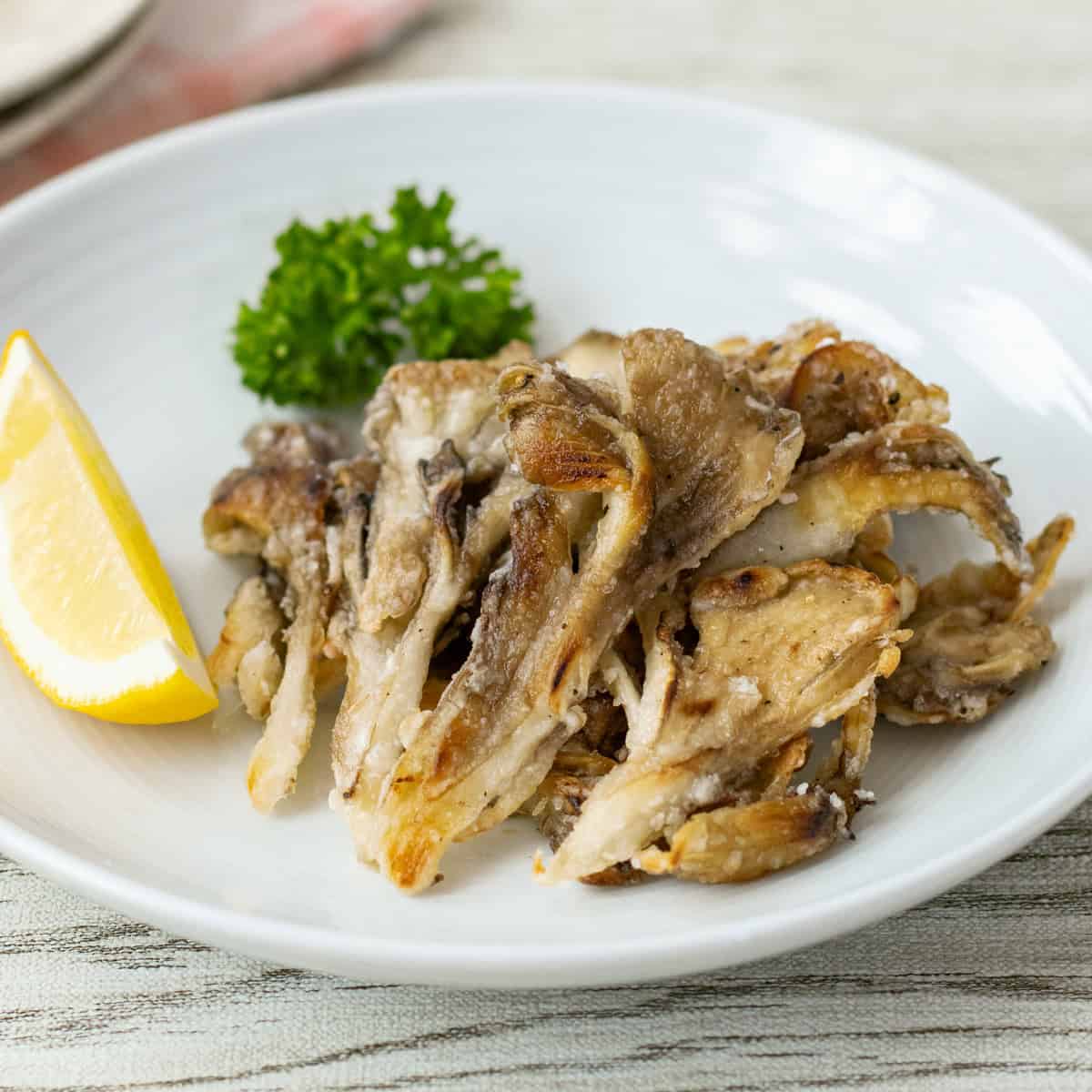
Jump to:
What is Karikari Maitake?
Karikari Maitake is a Japanese dish made by coating maitake mushrooms with starch and pan-frying them until crispy. "Karikari" means crispy in Japanese, and as the name suggests, this dish gives maitake mushrooms a crispy texture that differs from simply stir-frying them. It is quick and easy to prepare, making it perfect as a side dish to accompany your meal or as a savory snack to pair with drinks.
Maitake mushrooms are well-suited to oil, which is why pan-fried dishes like this one and tempura are popular in Japan. The use of oil enhances the natural flavor of the maitake while bringing out its nutritional benefits. You don’t need any special Japanese ingredients to make it, so feel free to give it a try.
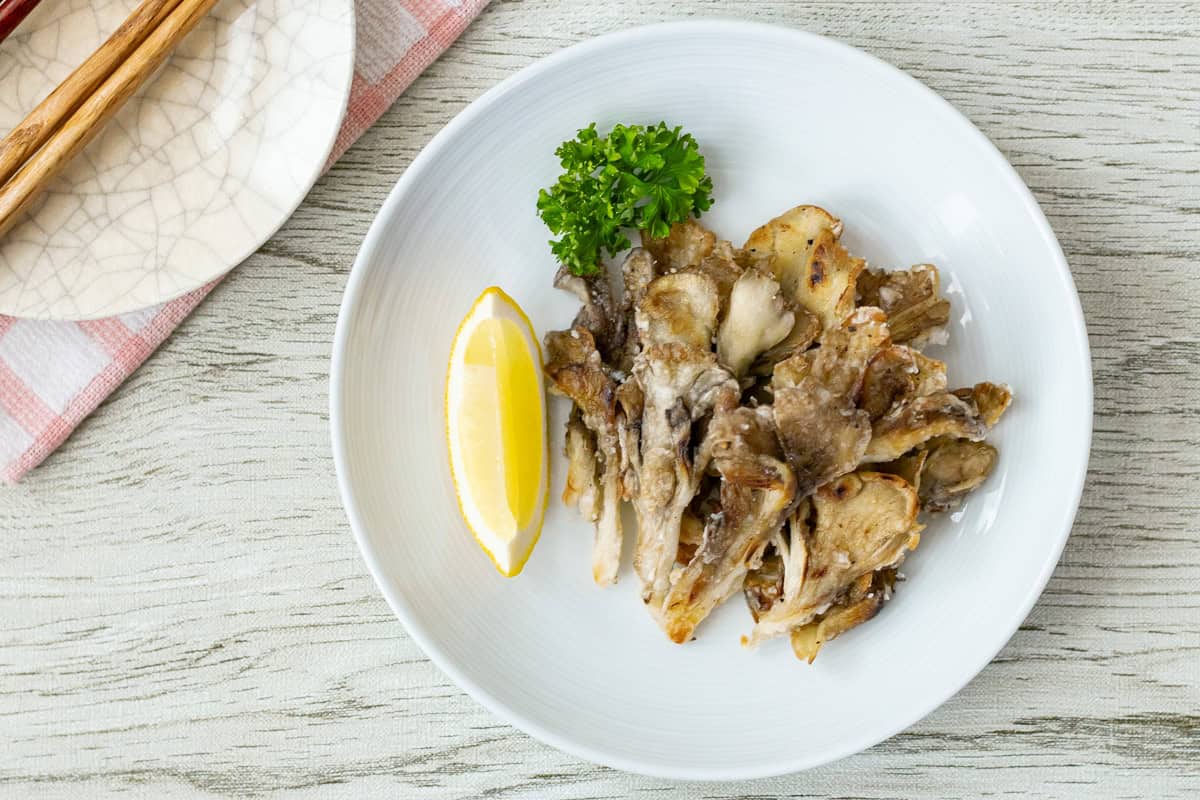
Exploring the nutritional power of maitake mushrooms
Maitake mushrooms are native to Japan and have been valued for centuries, but they were once quite rare and difficult to find, even deep in the mountains. Although advances in cultivation techniques have made them widely available today, they were once so valuable that they could be exchanged for their weight in silver.
The reason for this high value lies not only in their rarity but also in their reputation for promoting overall well-being. They provide the following key nutrients:
- Vitamin B2
- Vitamin D
- Potassium
- Folate
- Niacin
- β-glucans
Among these, special attention should be paid to vitamin D and β-glucans.
Maitake mushrooms contain more than ten times as much vitamin D as shiitake mushrooms, making them one of the richest sources of vitamin D among mushrooms. This vitamin is essential for the absorption of calcium and phosphorus, which are crucial for building healthy bones. While it can be found in meat and fish, it is not naturally present in vegetables or legumes, making it particularly important for those following a plant-based diet. Additionally, consuming maitake mushrooms with oil can increase the absorption of vitamin D by about 50%. This is why they are often cooked with oil.
The β-glucans found in maitake are also noteworthy. They are a type of soluble dietary fiber that can help regulate immune function, lower levels of bad cholesterol (LDL), and help manage cancer and allergy symptoms. This nutrient is already being used in anti-cancer therapies, and research into its benefits is ongoing worldwide.
Overall, maitake mushrooms are a great ingredient that should be actively incorporated into your diet. Let’s enjoy them with this recipe and aim for better health.
Using fresh maitake
Some people may know that freezing mushrooms, including maitake, before cooking can enhance their umami flavor. In fact, when mushrooms are cooked straight from frozen, their cell walls break down more easily, releasing flavorful components and improving their taste.
However, please note that this general rule doesn’t apply to this dish. Since karikari maitake is a dish in which maitake mushrooms are enjoyed with a crispy texture, using frozen maitake may cause them to lose that texture. To fully enjoy this dish, it is best to use fresh maitake mushrooms.
Seasoning options
Karikari maitake is usually seasoned with salt, pepper, and sometimes a squeeze of lemon juice.
While you can also season it with soy sauce and garlic, I wouldn’t recommend doing so, as strong flavors can overpower the delicate taste of maitake mushrooms. Even if you want to add a twist, it is better to let the flavor of the maitake shine through.
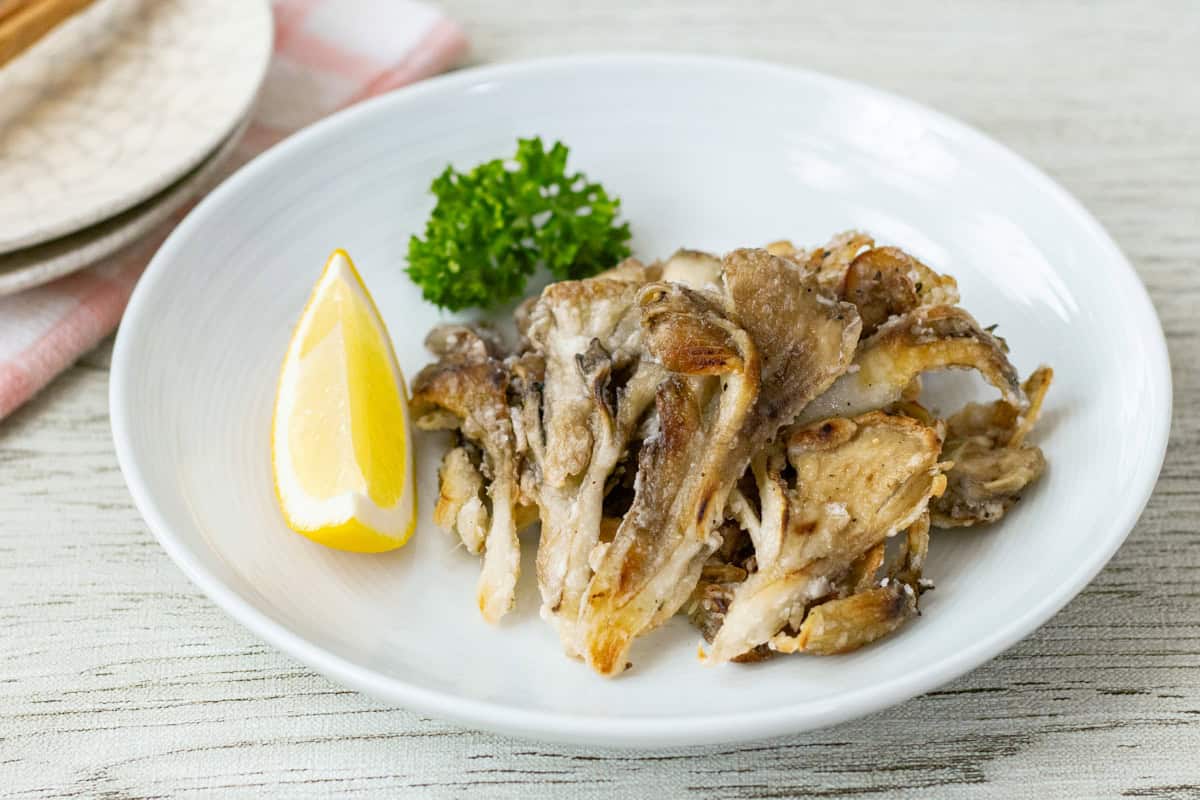
📋Step-by-step recipe
Ingredients
- 3.5 oz maitake mushrooms
- 2 Tbsp potato starch or corn starch
- 3 Tbsp neutral oil (for pan-frying)
- pinch of salt
- pinch of ground black pepper
Garnish (optional):
- parsley leaves
- lemon wedge
Instructions
🕒 Total: 7 mins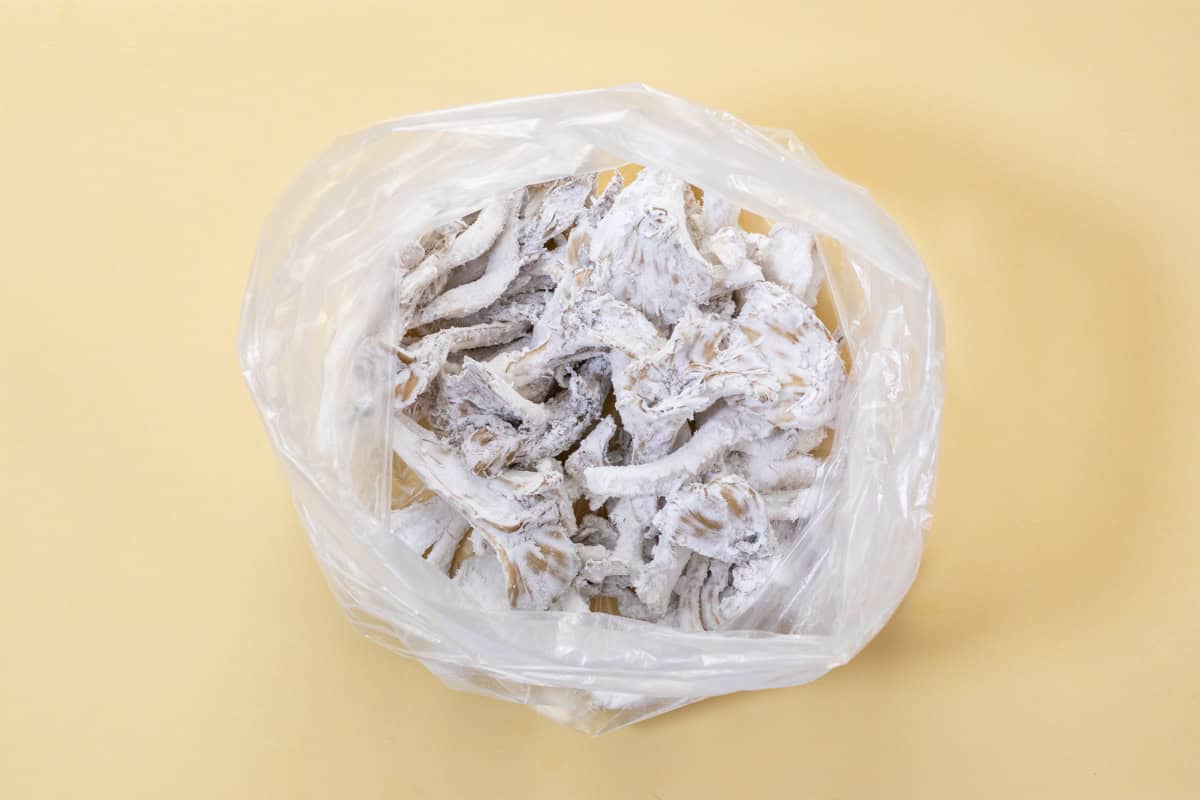
Step 1
Trim off the base of the maitake mushrooms and separate them into smaller or individual pieces. Put the pieces and starch into a plastic bag, twist the top closed, and shake to coat evenly.

Step 2
Heat the oil in a pan. Add the maitake mushrooms and toss to coat them with the oil. Pan-fry over medium heat until browned, then flip them over and cook until browned on the other side. Finally, sprinkle with salt and pepper.
For the best results, arrange the maitake mushrooms in the pan with as little overlap as possible. If your pan is small, cook them in batches.
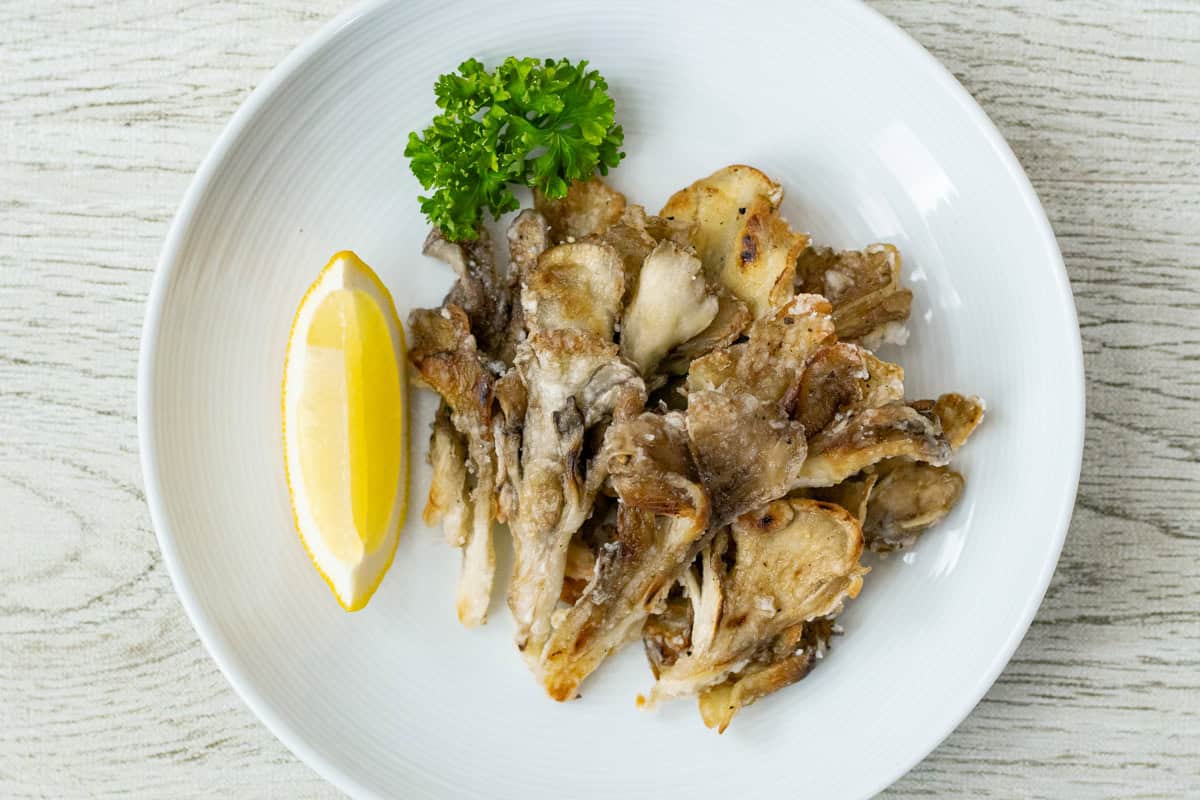
Step 3
Serve on a plate with lemon and parsley to taste.
To store
You can store it in the refrigerator for up to 3 days. However, it is best to consume it as soon as possible after cooking to enjoy its optimal texture.
Cooking tips
Do not rinse the maitake mushrooms. Rinsing them can not only wash away their umami components and vitamins but also result in a watery texture. If you are concerned about dirt on the maitake, wipe them clean with a paper towel instead.
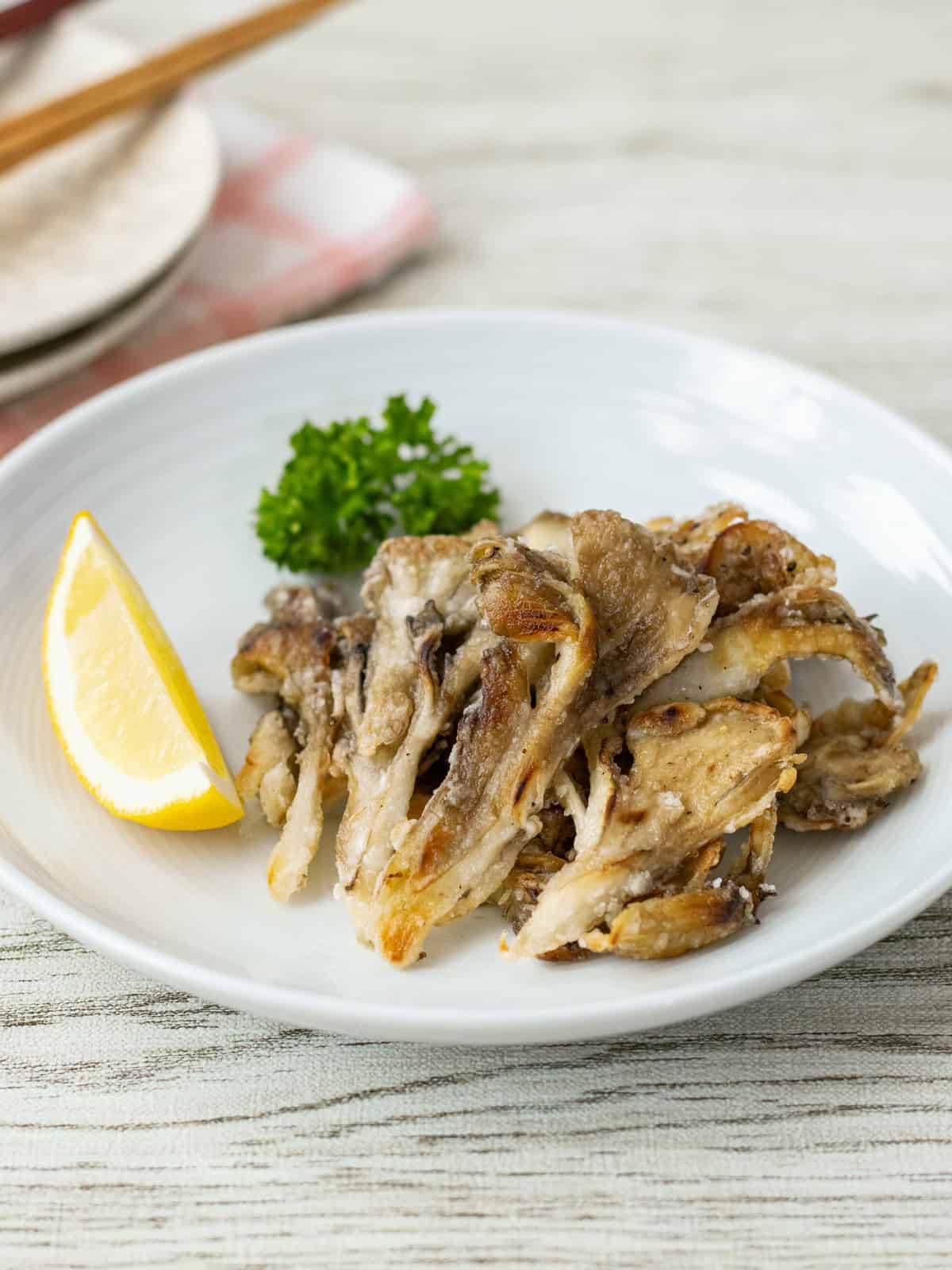
If you try this recipe, I’d love to hear what you think. Please consider leaving a review and star rating in the comments below. If you enjoyed it, I’d really appreciate it if you shared it with your friends.
More mushroom recipes you'll probably love
Recipe card

Karikari Maitake (Crispy Japanese Maitake Mushrooms)
Ingredients
- 3.5 oz maitake mushrooms
- 2 Tbsp potato starch or corn starch
- 3 Tbsp neutral oil (for pan-frying)
- pinch of salt
- pinch of ground black pepper
Garnish (optional):
- parsley leaves
- lemon wedge
Instructions
- Trim off the base of the maitake mushrooms and separate them into smaller or individual pieces. Put the pieces and starch into a plastic bag, twist the top closed, and shake to coat evenly.
- Heat the oil in a pan. Add the maitake mushrooms and toss to coat them with the oil. Pan-fry over medium heat until browned, then flip them over and cook until browned on the other side. Finally, sprinkle with salt and pepper.For the best results, arrange the maitake mushrooms in the pan with as little overlap as possible. If your pan is small, cook them in batches.
- Serve on a plate with lemon and parsley to taste.
Notes
- You can store it in the refrigerator for up to 3 days. However, it is best to consume it as soon as possible after cooking to enjoy its optimal texture.

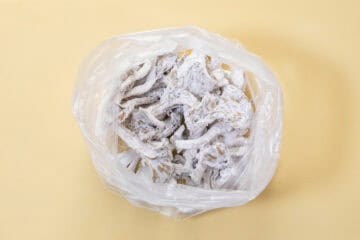
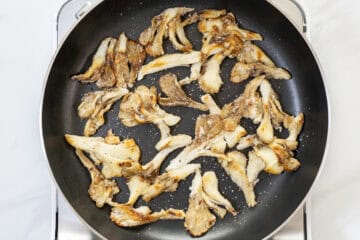
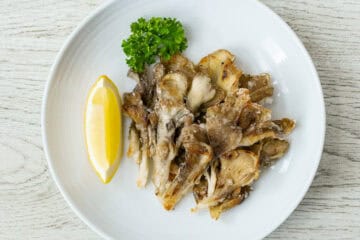

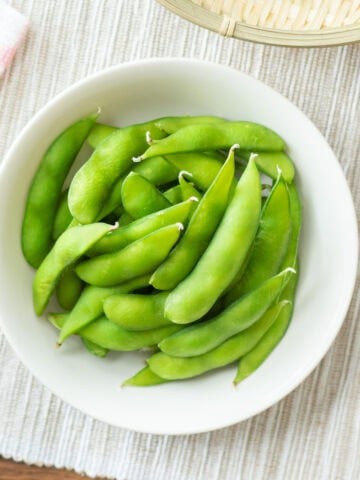
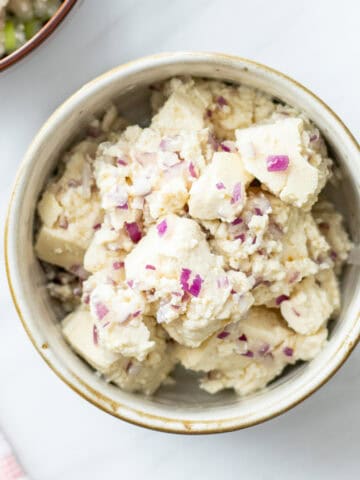
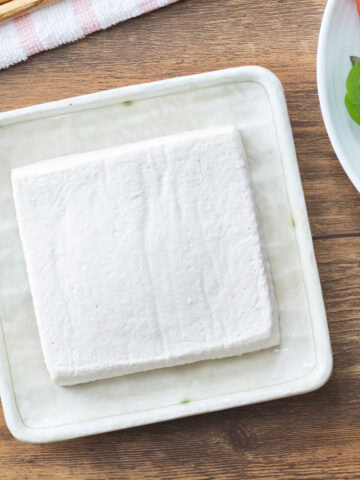
Leave a Rating and a Comment